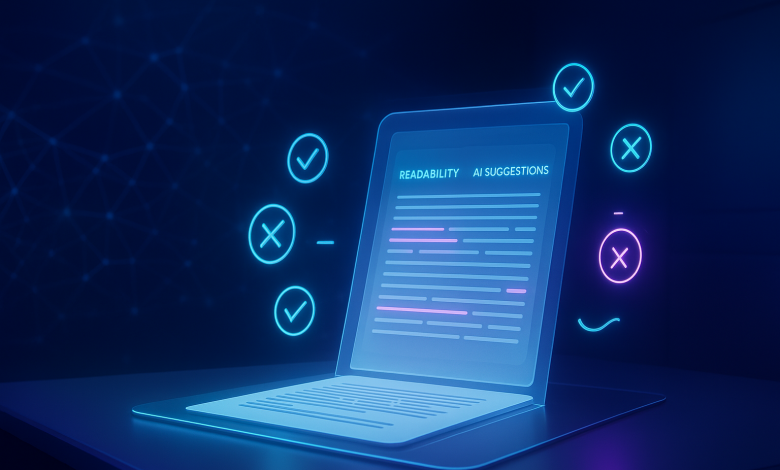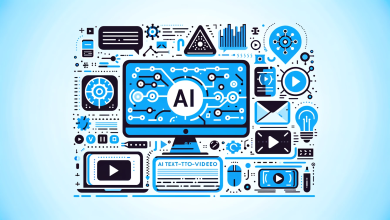
Why This Topic Matters Now
We’re living through a quiet revolution; the tools that once only found typos now rewrite paragraphs, adjust tone, and maintain consistent voice across massive documents. If you write, edit, or manage content, this shift affects your workload, speed, and strategy. AI isn’t a temporary trend — it’s becoming a permanent partner in editorial workflows.
Quick History — How Editing Moved From Human-Only to Hybrid
Early Grammar Checkers
The old-school grammar checkers were helpful but extremely limited — rule-based, rigid, and context-blind. They flagged basic errors but missed nuance completely.
Rise of Context-Aware Tools
Everything changed when models started understanding context. Modern AI reads entire paragraphs, suggests clarity improvements, and adapts tone for different audiences. Editing evolved from simply “fix errors” to “enhance meaning.”
How Current AI Tools Work (A Quick Technical Primer)
Modern editing AI blends natural language processing (NLP), machine learning, and rule-based logic. Large language models provide fluent rewrites, while editorial rules ensure consistency. This powerful combination allows AI to rewrite paragraphs, adjust tone, enforce guidelines, and enhance clarity — the foundation of modern AI editing tools.
Language Models and NLP
Language models learn patterns by training on gigantic text datasets. When you ask, “Make this more friendly,” the model uses patterns it has seen across millions of examples to craft an appropriate rewrite.
Rule-Based vs ML-Based Systems
Rule-based systems are predictable but rigid. ML-based systems are flexible but sometimes unpredictable. The best tools combine both: rules for consistency, ML for natural flow.
Types of Editing AI Can Do Today
Proofreading (Spelling, Grammar, Punctuation)
AI excels at mechanical proofreading — catching typos, grammar slips, and punctuation errors. For short-form content, AI proofreading is already “good enough” to replace many manual passes.
Copyediting (Clarity, Concision, Flow)
Today’s AI can suggest rewrites for clarity and conciseness, improve readability, and highlight repetitive areas. This is one of the most powerful aspects of AI editing, especially for high-volume content teams.
Stylistic & Tone Editing (Voice Profiles)
AI tools now mimic brand voice, apply style rules, and maintain tone consistency. They excel at creating uniformity — but preserving authentic human voice still requires human intuition.
Real-World Features Leading the Change
AI Agents and Micro-Tools
Agent ecosystems let writers run quick tasks like summarizing sections, generating headlines, or checking citations — all without leaving the editor.
Real-Time Suggestions and Paragraph Rewriting
AI now offers live rewriting, suggestion bundles, and instant tone adjustments. It’s like having a junior editor working at machine-level speed.
Benefits for Writers, Editors, and Businesses
Speed and Scalability
AI dramatically reduces editing time, enabling teams to publish more content without sacrificing quality.
Consistency and Accessibility
By enforcing brand guidelines and readability standards, AI editing improves clarity and makes content more accessible, which is also a major boost for SEO.
Limitations & Risks of AI in Editing
Context and Nuance Failures
AI can misinterpret intent or weaken arguments when rewriting. It doesn’t “understand” meaning — it predicts patterns. Humans must verify nuance.
Over-Reliance and Skills Erosion
If editors rely solely on AI suggestions, their skills may stagnate. Continuous training and manual reviews remain essential.
Ethical Concerns & Authorship
Who gets credit for phrasing: the writer or the AI? Transparency, attribution, and responsible use are critical guidelines for ethical editing.
The Changing Role of Human Editors — Collaborator, Reviewer, Curator
AI handles the repetitive work, while human editors focus on judgement-heavy tasks: safeguarding voice, ensuring accuracy, evaluating context, and maintaining ethical quality. Rather than being replaced, editors evolve into higher-level decision-makers.
Niche & Domain-Specific Challenges
Academic, legal, and technical documents require domain expertise. AI can assist with formatting or clarity, but subject-matter experts must verify factual accuracy.
Tools and Features to Watch in the Near Future
Personalization & Voice Profiles
Expect models that fully adapt to a specific writer’s voice or brand tone — making AI editing even more accurate and personalized.
File-Aware Editing (PDFs, InDesign, Long Manuscripts)
Future AI will understand layout, design elements, captions, and document structure — a huge advantage for publishers and designers.
How to Use AI Ethically and Effectively
Prompting, Constraints, and Voice Preservation
Clear, specific prompts produce better results. For example:
“Edit for clarity, keep my tone, don’t alter technical terms.”
Version Control & Quality Checks
Always maintain original copies, track accepted suggestions, and run human QA before publishing.
SEO & Content Strategy Implications
AI can generate SEO headlines, outlines, and meta descriptions instantly — but it cannot replace strategic thinking. Search engines reward originality, depth, and user value, which still rely heavily on human direction.
What Editors Should Learn Next
To stay ahead, editors should focus on:
- Prompt engineering
- Understanding AI tool capabilities
- Strengthening domain expertise
- Ethical decision-making
- Fact-checking and argument analysis
AI enhances the role — but only editors can ensure truth, context, and human depth.
Predictions — The 3–5 Year Outlook
AI will handle most proofreading and surface-level edits, while humans will focus on deep meaning, nuance, and accuracy. Expect more advanced collaboration tools and hyper-personalized AI editing engines.
Conclusion
AI is transforming editing and proofreading, not by replacing humans but by empowering them. Use AI to remove repetitive tasks and accelerate production — but rely on human judgement for nuance, creativity, and accuracy. The future belongs to editors who embrace AI as a collaborator, not a competitor.




